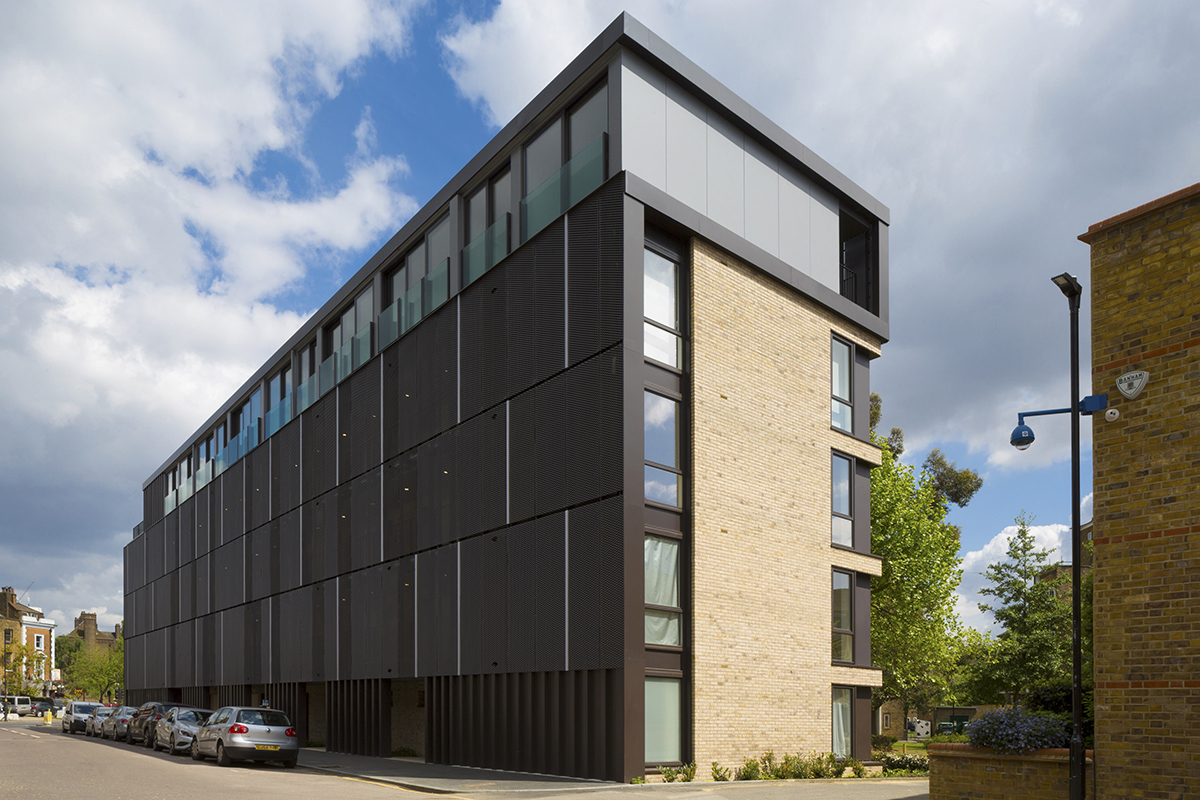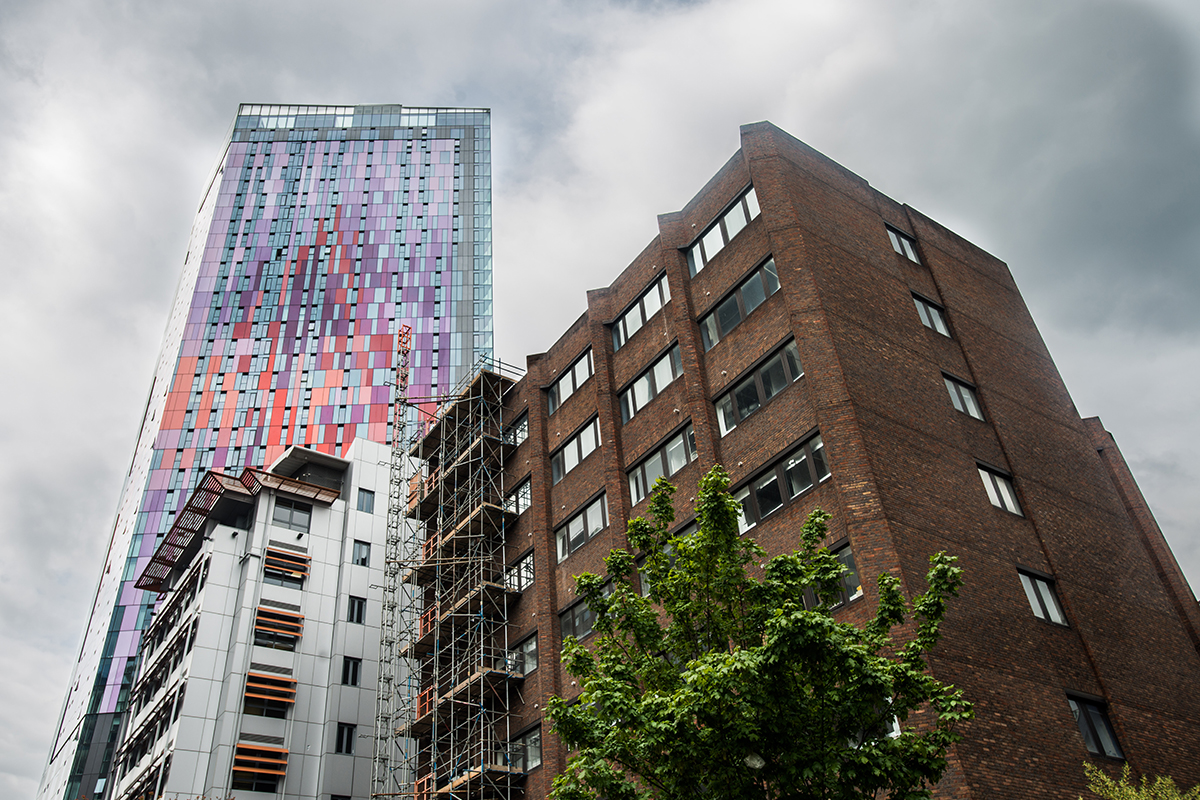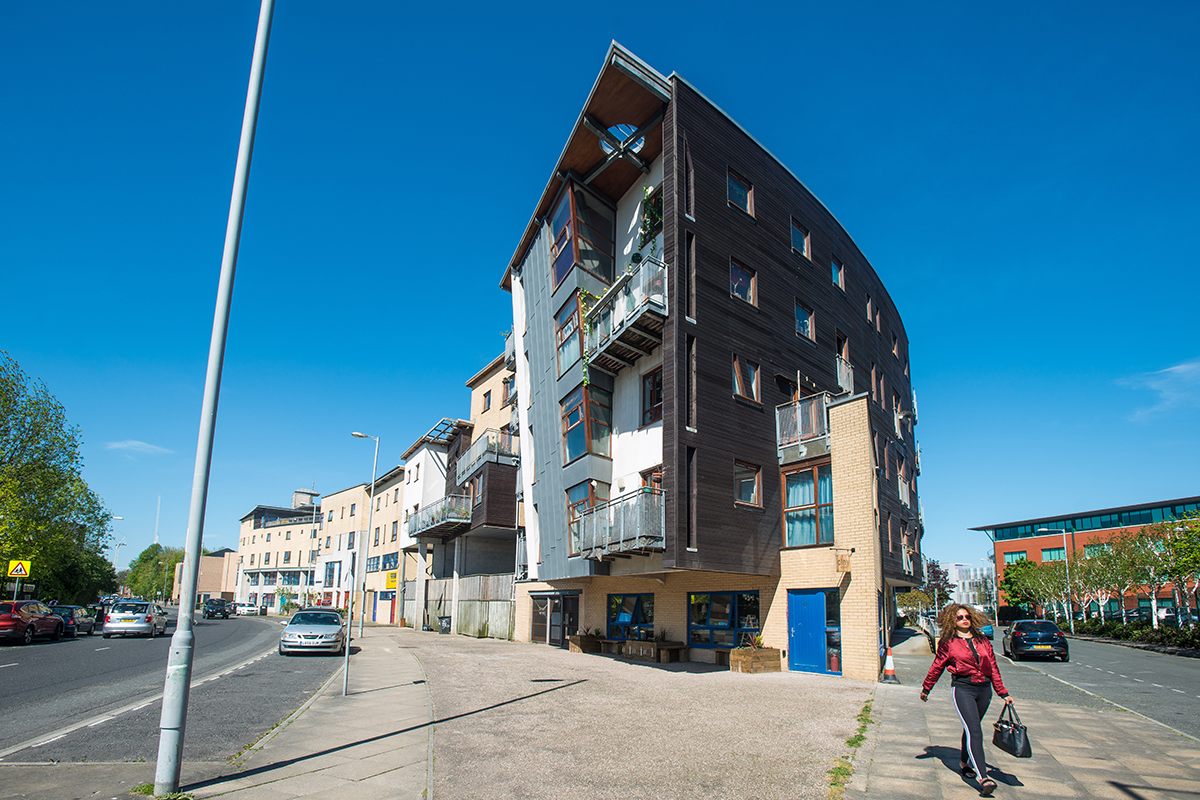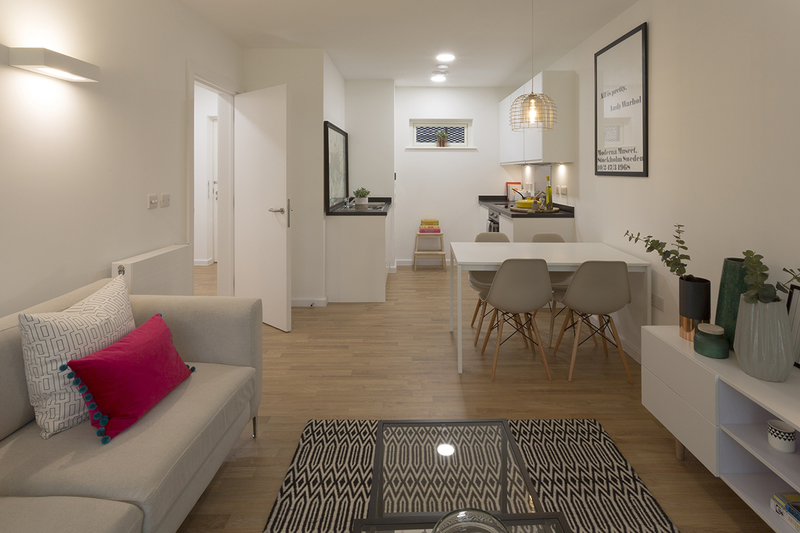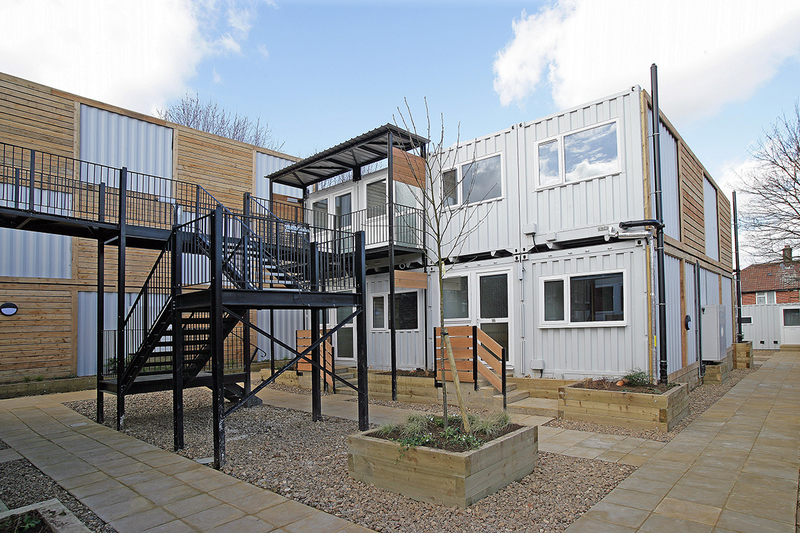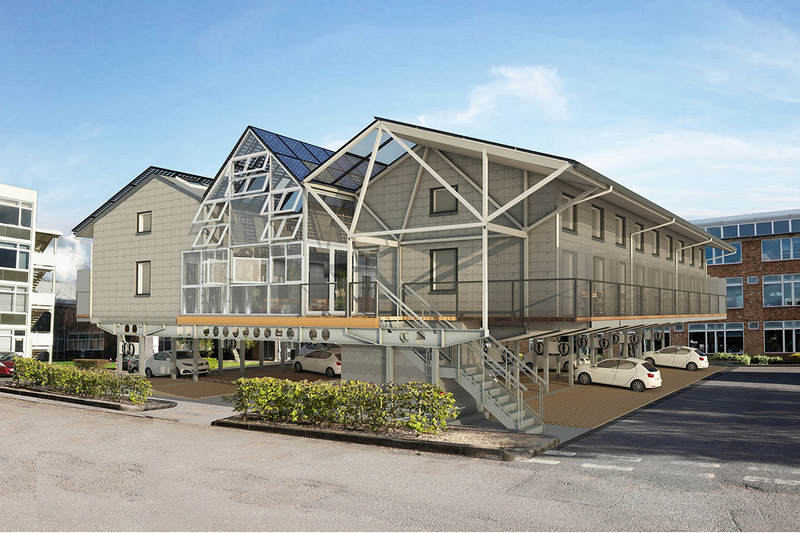You are viewing 1 of your 1 free articles
Thinking outside the box
As space for city centre housing becomes scarce, developers are coming up with radical solutions. Nathaniel Barker finds out more
Necessity, they say, is the mother of invention. And in housing at least, the old platitude holds. As parts of the UK remain in the grip of a housing shortage, a number of innovative solutions have begun to emerge: compact flats, homes in sea containers, even apartments on stilts.
These developers are not so much thinking outside the box as changing the box itself. But with so many new products, it’s not always clear which offer viable cures for the housing crisis and which are symptoms.
So, are any of these new strands of house builder gaining traction? And are their products up to scratch?
Perhaps the most straightforward fresh approach is to make the homes smaller. Pocket Living, a London developer established in 2005, has become the face of this solution. It was referenced twice in February’s Housing White Paper, with the government saying: “We want to make sure the standards are up to date so they do not rule out property sizes and types which more people now want to rent or buy.”
Former housing minister Gavin Barwell told an audience at last year’s Conservative Party Conference in Birmingham that Pocket has “basically done a deal” with the Greater London Authority (GLA) over space – though the developer itself says this isn’t true. Either way, the minimum standard for a one-bedroom flat is currently 37 square metres – down from the 50 square metre lower limit set by draft GLA guidance in 2010.
“The way I see the reference in the White Paper is that the public must open itself up to innovative ideas to help us meet the challenges that we face,” says Lucian Smithers, sales and marketing director at Pocket. “There can be no sacred cows.”
Pocket flats are almost bang on the new minimum requirement, but clever architectural sleights of hand such as wide doorways and high ceilings help give the appearance of space. They’re comparatively affordable, too. At a recently completed modular scheme in Lambeth, south London, one-bed units start from £267,000 (or £7,026 per square metre) – a market discount of 35%.
“We tried to take the delivery of affordable homes away from the cost of land.”
That’s difficult to beat in central parts of London and demand for the product is soaring. Around 35,000 people are currently registered as interested in buying a Pocket home: that’s 140 for each of the 250 units it expects to build in 2017/18. Clearly, there’s a significant consumer base demonstrating demand for this type of product. The big question is whether some of these debates about space could kick-start a race-to-the-matchbox scenario. The ‘how small is too small?’ debate is set to grow in prominence.
Back to basics
But homes don’t have to get smaller to be more affordable. That’s the view of Naked House, a mini not-for-profit developer which recently received £500,000 from City Hall to help it build out a 22-unit scheme in Enfield.
“We think space is more important than the fixtures and fittings,” says Neil Double, co-founder of Naked House. Once completed, some of the homes will be 50 square metres, but will include no partition walls, fitted kitchens, flooring or wall finishes. The idea is to cut down on “unnecessary” costs, with the homes expected to sell at between £150,000 and £340,000.
“We definitely see them as long-term homes,” says Mr Double. “We’re trying to look at ways for there to be the potential to extend in future, so that as people’s families grow they can add another room on.”
Opinion will be divided over the concept. But, as with Pocket, demand for a Naked House home already dramatically outstrips its supply pipeline, with more than 600 signing up to its waiting list. The project is gaining momentum, with other London councils interested in handing over land to the firm, so by the time the first homes are filled, the waiting list may have spiralled.
While it’s important first-time buyers are catered for, this is not the group in direst need. What’s out there for those who are feeling the sharp end of the housing crisis?
In a quiet corner of Ealing, west London, lies Marston Court, a development of 34 shipping container homes on a site previously occupied by a cluster of dilapidated garages. The properties provide temporary accommodation for people who have presented as homeless to the local authority and are an alternative to homelessness or being housed in a B&B miles from someone’s home borough.
“I think there’s an awful lot of interest in this solution. The type of land use is the big thing,” says Ross Gilbert, managing director of QED, the developer behind the scheme.
“One of the really exciting things about this is that it’s flexible and it can provide responses quickly to the needs of local authorities.”
All in, the Marston Court scheme took less than six months to complete, with the first tenants moving in towards the end of March this year. It is part of a 10-year ground lease deal with Ealing Council, after which the site will be cleared to make way for permanent homes. The containers will be moved to another brownfield plot awaiting regeneration, possibly within the borough.
It’s a neat system for converting problematic plots into assets for the council and QED is set to launch similar schemes in Acton, west London, and Medway, Kent, in the coming months. Mr Gilbert says he has been contacted by interested local authorities “two or three times a week” over the past 18 months, so why has there been relatively little uptake?
“Getting buy-in from councils right the way up the food chain is difficult,” says Mr Gilbert. Those guarding the coffers tend to be cautious when money is tight and the product is relatively untested.
Lofty ambitions
ZedPod is yet another brand offering an eye-catching housing solution. These pods are small, super-eco houses on stilts, designed to sit above car parks. At volume, the cost of construction is just £65,000 per unit, thanks largely to an offsite pop-up factory system, where industrial space is rented close to new scheme sites for assembly of the product.
“We tried to take the delivery of affordable homes away from the cost of land,” says Bill Dunster, the architect behind ZedPod.
He’s keen for ZedPod to provide long-term, relatively affordable rent for key workers – £650 per month or less with no bills in London. And, three years after the design was first conceived, Mr Dunster believes the project is ready for take-off after its £4.5m fundraising target was reached in April. He remains hesitant over the details, only willing to reveal that the first ZedPod residents are expected to move in to a privately owned car park before the year is out.
“We think space is more important than fixtures and fittings.”
Inside, the ZedPod is small but hospitable. It isn’t perfect – there are the predictable issues with storage, and a whirring boiler sits right next to the bed area – but the design’s ingenuity is impossible to deny.
Mr Dunster and his team are drawing up plans with councils, housing associations and private landowners across the country. Before long, he claims, raised villages on car parks will become a regular sight.
Asked if it has been tough getting to this point, Mr Dunster says: “It’s impossible. And the only way you can do it is to fundraise first. You have no idea how difficult this is.
“We bid for government funding but we always get outcompeted. The money just goes to the same old boring people, the major builders.”
He echoes the sentiment of other alternative developers: the obstacles to their projects are all perception-based. Convincing inherently risk-averse groups like planners, investors and hard-up council housing departments to take a punt on an unknown quantity over established competitors is far from easy.
Evidently, no level of architectural vision can provide the antidote to Britain’s housing woes. And there will be those who argue we should be striving to lower the blistering cost of land, not simply finding ways to adapt; but alleviating the situation will require some serious lateral thinking.
The line between clever solutions to a critical affordable housing shortage and the impact on conditions for those most severely affected remains the subject of debate. There is no easy answer to the question of whether the gathering momentum of these alternative homes represents endorsement or a reflection of the reality that more conventional models are simply unattainable for anyone but the highest earners.
But traditional methods clearly aren’t yielding the necessary results, and more unusual forms of housing look likely to become an ever-bigger part of the national picture.
